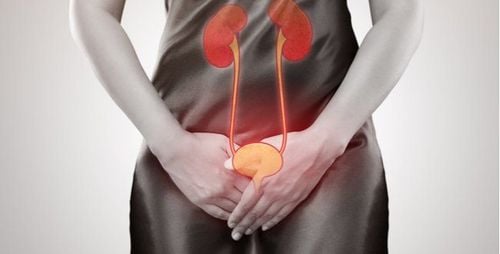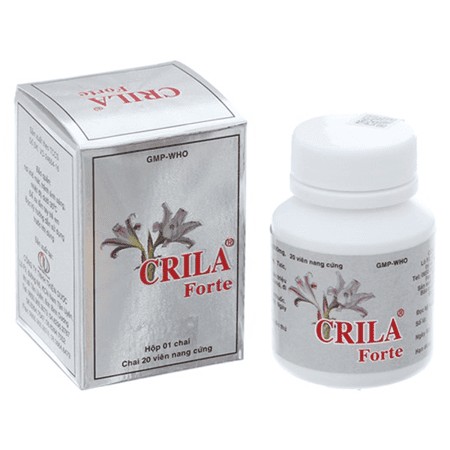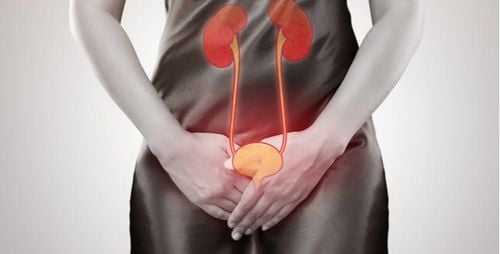This is an automatically translated article.
Giannina's main active ingredient is Solifenacin, a competitive inhibitor of the muscarinic receptors of the cholinergic system. The drug is indicated in the symptomatic treatment of urinary incontinence, urinary frequency, and urgency in patients with overactive bladder syndrome.
1. What is Giannina?
The active ingredient in Giannina is Solifenacin, a specific competitive antagonist of the cholinergic receptor. Normally, the bladder functions by the parasympathetic nervous system of the cholinergic system. Acetylcholine causes bladder smooth muscle contraction via muscarinic receptors. Pharmacological studies have shown that Solifenacin is a competitive inhibitor of the muscarinic receptor. After oral administration of Solifenacin succinate tablets, peak concentrations are reached approximately 3 to 8 hours later. The time to peak concentration is independent of the dose used.2. Uses of the drug Giannina
Giannina is indicated for the symptomatic treatment of urge incontinence and/or urinary frequency and urgency in patients with overactive bladder syndrome.
Giannina is contraindicated in the following patients:
Patients with urinary retention, severe gastrointestinal disease including toxic megacolon, myasthenia gravis, narrow-angle glaucoma and patients at risk for these conditions . Patients with known hypersensitivity to Solifenacin succinate or any of its ingredients. Patients on hemodialysis, severe liver failure. Patients with severe renal impairment or moderate hepatic impairment being treated with strong inhibitors of CYP3A4 such as ketoconazole).
3. Dosage and usage of the drug Giannina
Giannina medicine is taken orally, can be taken with or without food.
Adults, including the elderly: The recommended dose of Giannina is 5 mg once daily, which can be increased to 10 mg once daily if needed. Children: Safety and effectiveness in children have not been established. Therefore, Giannina should not be used in children. Patients with renal impairment: No dose adjustment of Giannina is required for patients with mild and moderate renal impairment (ClCr > 30mL/min). Giannina should be used with caution in patients with severe renal impairment (ClCr less than 30 mL/min), the dose should not exceed 5 mg once daily. Patients with hepatic impairment: No dose adjustment of Giannina is required for patients with mild hepatic impairment. Giannina should be used with caution in patients with moderate hepatic impairment (Child-Pugh score 7 - 9), the dose should not exceed 5 mg once daily. Combination with strong inhibitors of CYP3A4: The maximum dose is limited to 5mg when using Giannina with Ketoconazole, Ritonavir, Itraconazole.
4. Side effects of the drug Giannina
Patients using Giannina drug may experience the following undesirable effects:
Common, 1/100 ≤ ADR < 1/10: Blurred vision, constipation, nausea, indigestion, dry mouth, pain belly. Uncommon, 1/1,000 ≤ ADR < 1/100: Urinary tract infection, cystitis, drowsiness, taste disturbance, dry eyes, gastroesophageal reflux, dry throat.
5. What are the precautions when using Giannina?
Other causes of urinary frequency such as heart failure or kidney disease should be evaluated prior to treatment with Solifenacin. If the patient has a urinary tract infection, it should be treated with an appropriate antibiotic. Solifenacin should be used with caution in patients with bladder outlet obstruction, gastrointestinal obstruction, high risk or impaired gastrointestinal motility, severe renal impairment, autonomic neuropathy, use Concomitant use with strong inhibitors of CYP3A4, esophageal hiatus hernia, gastroesophageal reflux and/or concomitant use with drugs may cause or worsen esophagitis. Cases of QT prolongation and torsades de pointes have been reported in patients with high risk factors such as QT prolongation syndrome and pre-existing hypokalemia. Safety and effectiveness of Giannina have not been established in patients with a neurological cause for bladder neck hyperactivity. CNS effects have been reported with the use of the drug (eg, headache, confusion, hallucinations, somnolence). CNS effects should be monitored, especially when starting or increasing the dose, reducing the dose or stopping when symptoms become severe. In addition, Giannina may cause drowsiness and/or blurred vision, impaired physical or mental capabilities, so patients must be warned when performing tasks requiring alertness such as operating machines, driving. Data suggest that long-term use of anticholinergics may adversely affect the clinical course of Alzheimer's disease in patients receiving cholinesterase inhibitors. Cognitive and behavioral abnormalities should be carefully monitored in dementia patients receiving dual therapy with an acetylcholinesterase inhibitor and an anticholinergic agent such as Solifenacin. Angioedema with airway obstruction has been reported in some patients receiving Solifenacin succinate. If angioedema occurs, the patient should discontinue solifenacin and institute appropriate therapeutic measures. There have been reports of anaphylactic reactions with the use of Solifenacin succinate. For patients with signs of anaphylaxis, solifenacin should be discontinued and appropriate therapeutic measures instituted. Pregnancy: Adverse events have been observed in several animal reproduction studies. Therefore, Giannina should not be used in pregnant patients. Lactation: It is not known whether Solifenacin passes into breast milk. According to the manufacturer, the decision to breastfeed during treatment should weigh the benefits and possible risks.
6. Drug interactions:
Simultaneous use of Giannina with some drugs may cause interactions, affect the effectiveness of treatment and/or increase the side effects of the drug. To prevent interactions, patients should inform their healthcare provider of all prescription and nonprescription medications and dietary supplements they are taking. Here are some drug interactions to keep in mind when using Giannina:
Using Solifenacin with anticholinergic drugs may increase the treatment effects and unwanted effects. Giannina should be discontinued approximately 1 week before initiating anticholinergic therapy. Solifenacin may decrease the effectiveness of drugs that stimulate gastrointestinal motility such as metoclopramide and cisapride. Solifenacin is metabolised by CYP3A4. Co-administration of Solifenacin with Ketoconazole increased the AUC of Solifenacin by 2-fold. Therefore, the maximum dose of Solifenacin succinate should not be greater than 5 mg when co-administered with ketoconazole or with therapeutic doses of other strong CYP3A4 inhibitors such as Ritonavir, Nelfinavir, Itraconazole. The article has provided an overview of the drug Giannina. If you have questions or need more information about the drug, you can contact your doctor or pharmacist for advice
Please dial HOTLINE for more information or register for an appointment HERE. Download MyVinmec app to make appointments faster and to manage your bookings easily.













